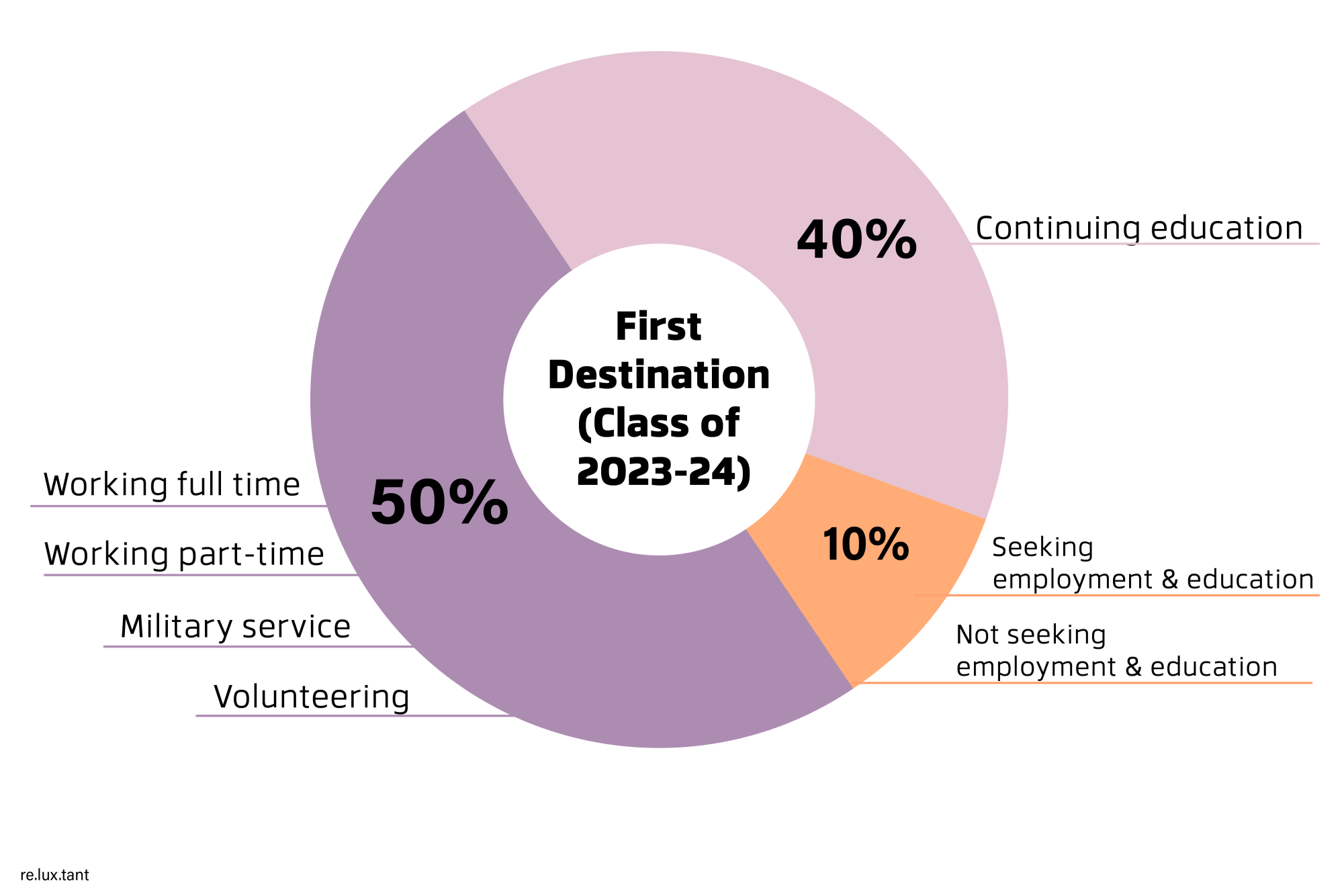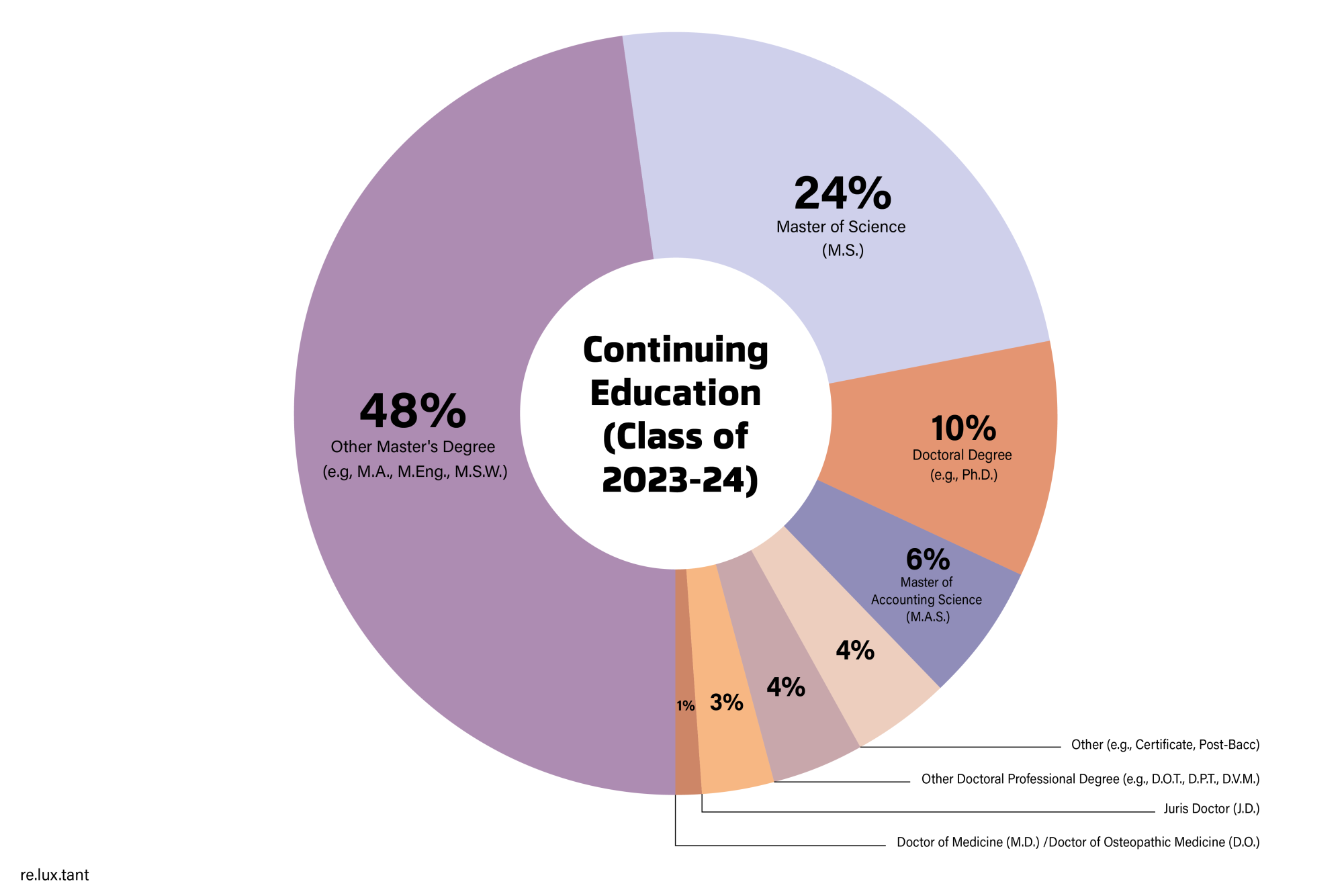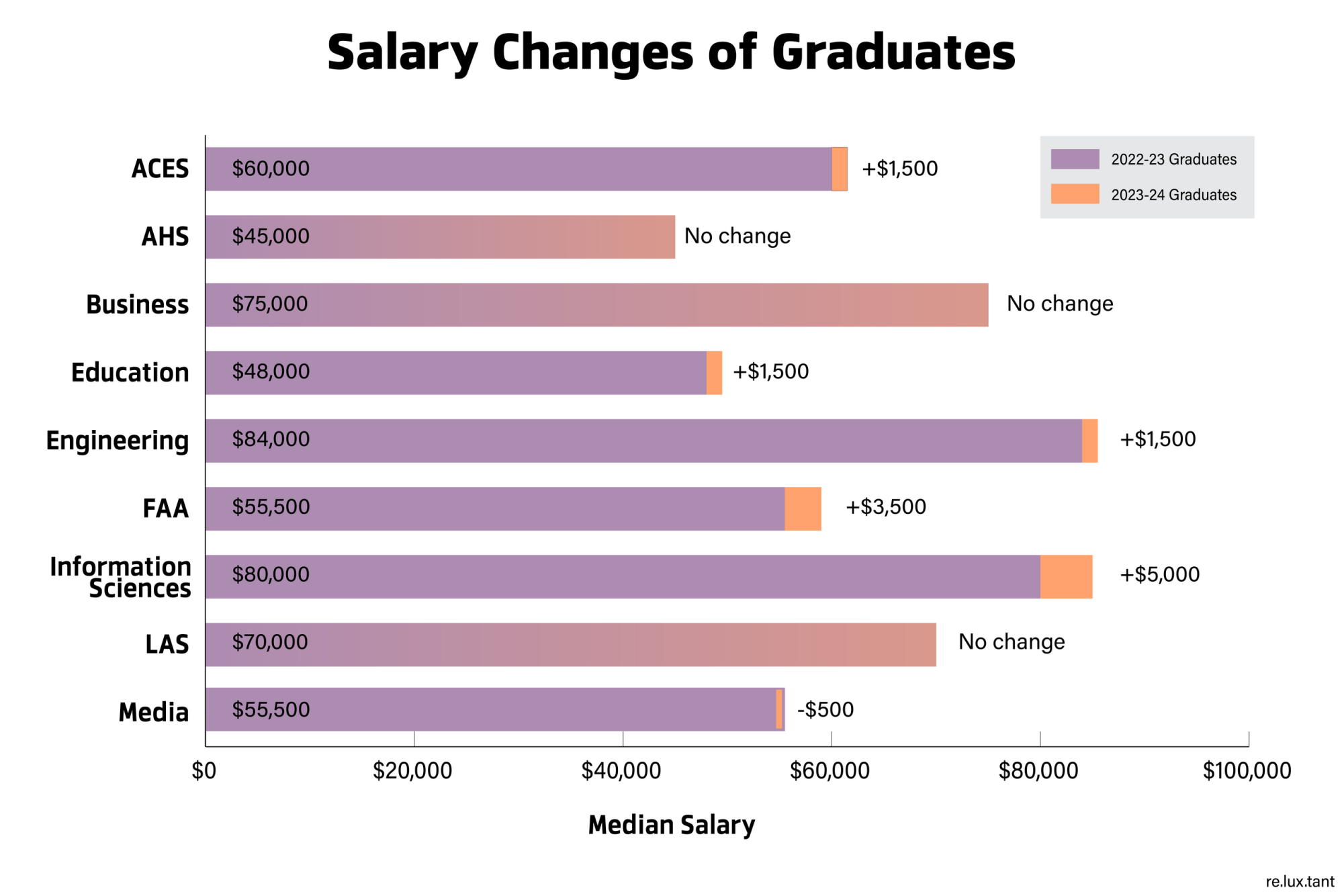Last week, students received a Massmail from Chancellor Robert Jones showcasing the results of the 2023-2024 Illini Success report. This annual report shows where new bachelor’s degree recipients were headed up to six months after graduation.
These salary data do not encompass all new graduates from the University, but rather about 15% of the total new graduates from whom the Center for Innovation in Teaching and Learning was able to gather data. Some degree salaries in the report are based on fewer than five students’ data. Only one major had data from more than 100 students.
The analysis excludes outliers, values below federal minimum wage or above $500,000 and signing bonuses, according to the Illini Success methods page. All starting salary figures listed in this story refer to median wages.
First destinations
Ninety-percent of 2023-2024 graduates are either employed or continuing their education.
Get The Daily Illini in your inbox!
The employed group consists of students who are working part- or full-time, volunteering or serving in the military.
The continuing education group’s students were sourced by the University through surveys, the National Student Clearinghouse and LinkedIn. The majority of this group is beginning their journey toward obtaining a master’s degree.
The other 10% of graduates do not have a first destination secured. This includes students who are either seeking a next step or not looking for work or education.
Eighty-percent of Illinois residents who secured a first destination will remain in the state of Illinois. In total, roughly 72% of undergraduate students are Illinois residents, according to the Division of Management Information’s Spring 2025 statistical abstract.

Continuing education
Of the roughly 40% of students choosing to further their education, nearly three-quarters are pursuing a master’s degree. Just 1% of new graduates reported their next step as a medical degree.
For the 2022-2023 graduating class, only 35% of reported graduates chose to go into further education. Like this year’s report, most of those students are pursuing master’s degrees. A slightly higher 2% said they would begin a medical degree.

Lowest-, highest-paying majors
The graph below shows the lowest- and highest-paying majors by college at the University. Computer science in the Grainger College of Engineering and the CS + X degree programs, each of which are housed under their respective “X” college, hold the top spot in three of the eight listed colleges.
The largest single-college gap is from the College of Liberal Arts and Sciences, whose highest- and lowest-paying salaried majors — statistics and CS and integrative biology, respectively — had a difference of over $90,000.
The lowest-paying major in the report was the College of Applied Health Sciences’ interdisciplinary health sciences at $40,000. Though not featured in the graph, the second-lowest paying major was social work at $40,500, which is housed in the School of Social Work.

Previous year comparison
The Daily Illini compared this year’s salary results to last year’s, finding that the college with the most extreme difference in median reported salary was the School of Information Sciences, which saw an increase of $5,000 since last year.
The Gies College of Business, the College of Applied Health Sciences and the College of Liberal Arts and Sciences had no changes in reported median salary since last year’s survey.

Compared to other schools across the nation, the University ranks 100th in early career pay at $80,200, according to the compensation data provider Payscale.







